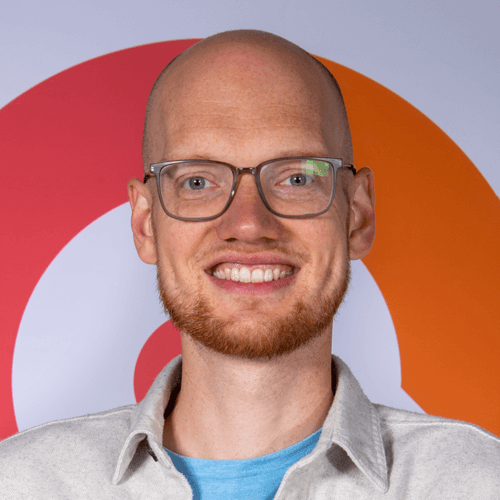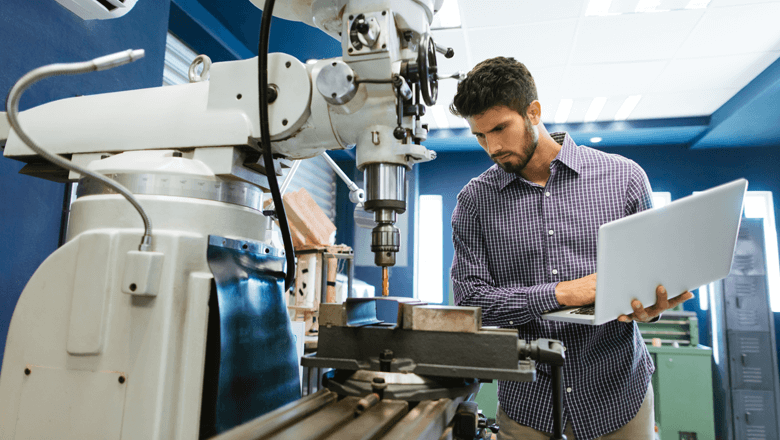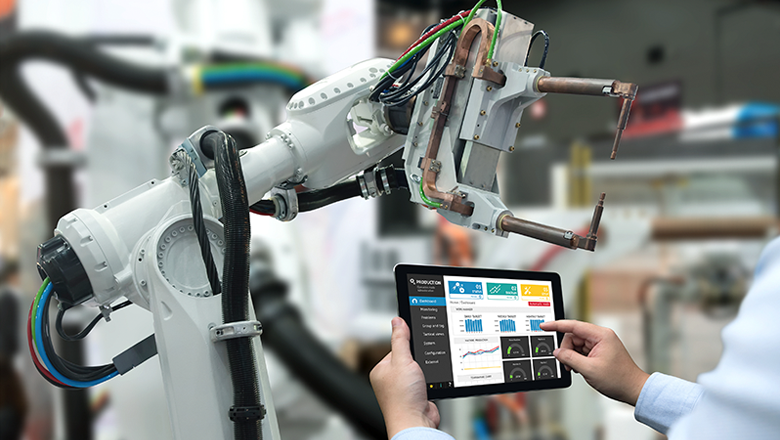IoT essential for continuity and success
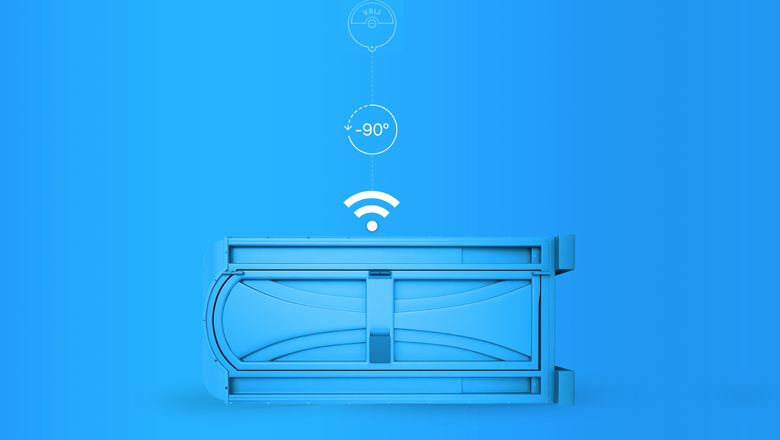
The Internet of Things in the industrial world makes processes more efficient and brings new business models within reach. IoT partners Sentech, Kresco and Ideo demonstrate these advantages with a working IoT application for mobile toilets. Discover why cooperation is crucial for the successful application of IoT and find inspiration to create your own IoT applications and new business opportunities for your company.
IoT is the key to business continuity and commercial success. Effective cooperation between SME companies is essential to achieving this. Or, as director Marcel Figge said earlier this year about Sentech’s IoT vision: “The better and more intensively you work together, the more you benefit.” The mobile toilet case demonstrates what IoT is, how you should approach it and what it can do.
New possibilities with existing technology
Although the technology is already available, the industrial Internet of Things is still in its early stages. According to business development manager Marco Leeggangers, there are no ready-made standards yet for implementing it. “We want to show the possibilities of IoT with the mobile IoT toilet,” he explains. “Sentech’s starting point is an overall vision of industrial IoT.”
“Industrial IoT helps to make assets digitally available, with the ultimate goal of improving processes by means of extra understanding and analysis.” According to Leeggangers, it is not an objective in itself, but a new means of achieving goals like:
- Process improvement
- Cost savings
- More effective business practices
- New revenue models
Hypothetical example: toilet capacity in Vondelpark
Leeggangers describes a hypothetical new IoT service. “Imagine Vondelpark in Amsterdam, where the city needs mobile toilets. But the council doesn’t want tourists complaining about dirty toilets. As a supplier, you can use IoT to transform toilet rental into a new service: always sufficient, clean toilet capacity, regardless of the circumstances.”
He continues: “With IoT toilets, you have a real-time view of the current status of each toilet. How full they are, how intensely they’re used and how often the door is opened and closed. We then add historical data and the locations of the toilets as well as data from other sources: the weather forecast, Amsterdam’s event calendar, holiday calendars, etc.”
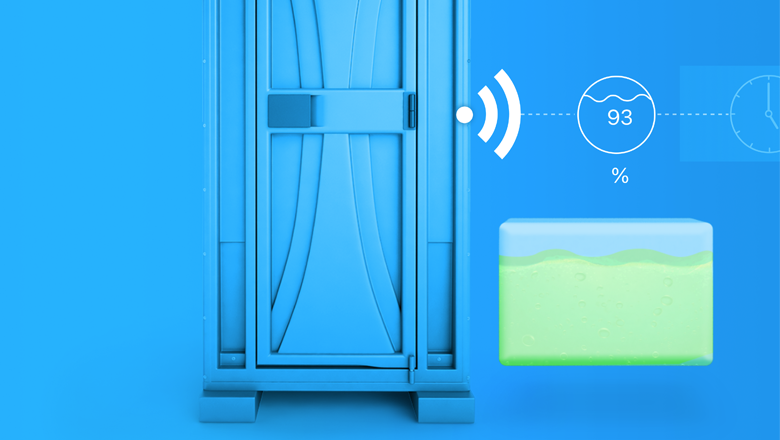
“You now have valuable data sets you can use and compare to predict the capacity needed at different locations in Vondelpark. By comparing and analyzing data, you can improve the service you provide. And that creates new revenue models, as you no longer hire out toilets, but provide sufficient, clean capacity at all times,” says the business development manager.
The magic of IoT
Leeggangers calls it “the magic of IoT”. “The possibilities are endless, as you start to think outside the framework of your own company and separate processes. You can combine information from various processes from inside and outside of the company. Analysis software helps you to make new connections between the process, environmental factors and other sources of information.”
Smart mobile toilet as Proof of Concept for IoT
Sentech was looking for a high-profile application that could be used as a showcase and blueprint for IoT developments in SME companies. Leeggangers: “Our customers increasingly told us that they wanted to do something with IoT, because they can see this development coming. But they usually don’t know what it is exactly and what you can do with it. The mobile toilet as a showcase allows us to demonstrate all the aspects and possibilities of IoT.”
The sensor integrator involved the IT partners Kresco and Ideo in the development. Their role in the project will be discussed later.
Leeggangers: “The idea is simple, really. Equip a mobile toilet with sensors and send the sensor data to a smart platform. And there you have it: a smart mobile toilet. It’s also a fun example that people talk about. You can devise and simulate of all kinds of scenarios. You can also show how we open up data to the cloud and how we mine big data for practical information and the control of scheduling and maintenance work.”
Combining data generates added value
There are already ten mini toilets that simulate all kinds of scenarios and collect and send real-time data together. “Even without sending data to the cloud, sensors already provide an indication of the status of a mobile toilet,” says Leeggangers.
“Where things become really interesting is when you combine the sensor data with data from other sources. We also really do this in the cloud. It opens up a world of possibilities for new services.”

Engaging specialists
Leeggangers: “You need at least four different disciplines to be able to roll out IoT. There’s not a single SME company that has them all, so you have to work together to develop an IoT application.”
It involves the following disciplines, which were provided by different partners in the IoT showcase:
- The IoT device itself with sensors (Sentech)
- The necessary connectivity (Sentech/Kresco)
- Data storage, processing and analysis (Kresco/Ideo)
- The software application, dashboards, controls, etc. (Ideo)
IoT partners about their role and technology
The partners in crime talk about their role in each of the specializations and about the technology that made mobile toilets smart. Jeffrey Joosten, director/owner of Kresco, explains the data challenges. John van Rooij, sales manager at Ideo, discusses the software application that translates the collected data into operational actions (a mechanic is scheduled). The smart use and processing of data actually enables new revenue models.
Standard sensor technology and sensor gateway
Sentech developed a scale model using 3D printing. It is fitted with a sensor system consisting of different sensors and a sensor gateway. This creates a smart IoT device. The scale models contain standard sensors for:
- Rrelative humidity
- Atmospheric pressure
- Fill rate
- Air quality
- Position (x,y,z)
- Door position
- GPS
- Presence
Modern connectivity: the sensor gateway
The sensor data is collected by an energy-efficient sensor gateway in the toilet that sends it to the data platform (in the cloud) by means of a LoRaWan connection. Kresco and Sentech use the new LoRaWan infrastructure in TheThingsNetwork (TTN) for connectivity.
Kresco employs its Microsoft Azure IoT as a data platform to meet the challenges of sending, storing, accessing and securing the data. The sensor data from the mobile toilets are sent via the TTN in encrypted form and are subsequently decoded when they are received in Azure. The big data are collected in the Azure system in the form of data packages and individual sensor data.
Scalable back-end cloud platform for data storage
Kresco owner Jeffrey Joosten agrees that IoT is so extensive that you could never do it all yourself. “We focus on the data side of IoT applications, using Microsoft Azure IoT as the platform. This is based on technology we have been using for years.”
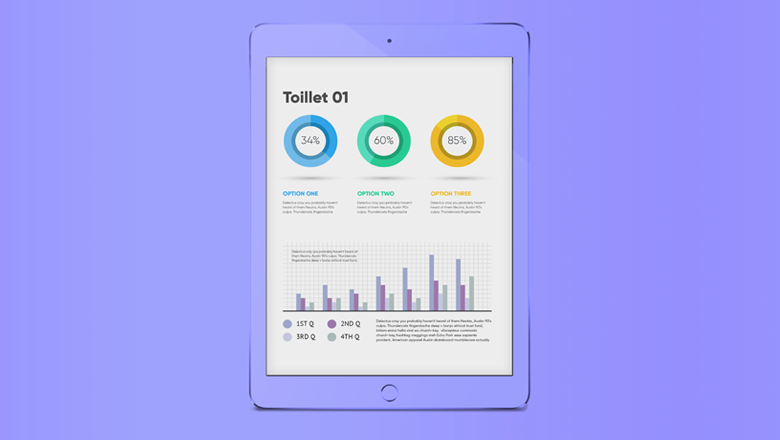
The strength of Microsoft Azure IoT
Joosten: “The strength of Azure IoT is that it is an accessible and open platform. Both the platform and the data are owned by the customer, in this case Sentech. Until recently, IoT platforms were offered mainly as black box, or you had to set up an entire server park to achieve comparable functionality. But data is now safely in the cloud, on an organization-specific platform with a pay-per-use policy.”
“This generates even more advantages: flexibility and scalability,” he says. “It allows companies to start simply and small, without major risks. They create awareness in their own organization first and gain experience. Everyone then gets answers to questions like: What can IoT do for my organization? What can I do with it? And the ultimate question: are we going to continue this way, do we have to adjust anything or not?”
“We joined the IoT project with Sentech and Ideo to also show our customers what the possibilities are. It acts as a starting point for discussion. It’s a good showcase but one that actually works as well. The longer we work on it, the more information we collect and the more tangible scenarios we can simulate. That way, we can inspire companies to think about IoT in their organization. It’s easy to come up with ideas for new business cases,” says Joosten.
Added value through smart data use
The added value of IoT manifests itself at the front end of the mobile toilet solution. Ideo played a prominent role in creating that added value. Sales manager John van Rooij: “We are a systems integrator with a focus on software for service and maintenance processes. We use software and data to optimize work order processes for technicians, for example. Ideo does a lot of work for maintenance companies, utility companies and the manufacturing and the process industries.”
“I’m convinced that all the technologies are already there. The innovation is in how they’re combined,” explains Van Rooij. “In the field of maintenance, malfunctions are triggered by people but they’re also caused by the devices themselves. And that’s when you enter the terrain of IoT. This is also where we want to play a supporting role, because we can see that IoT enables companies to adjust their business model.”
“Our customers want a practical explanation of IoT and a showcase outside their own specialization helps to do that. Otherwise you get a discussion about examples that don’t match reality. A mobile toilet is something that everyone can imagine,” chuckles the sales manager.
Efficient service orders
Van Rooij: “We supply an application that can handle triggers from devices and data systems. Kresco supplies the middleware with data and data analysis of the sensor data and data from other sources. The system has been configured in such a way that it generates triggers for service orders.”
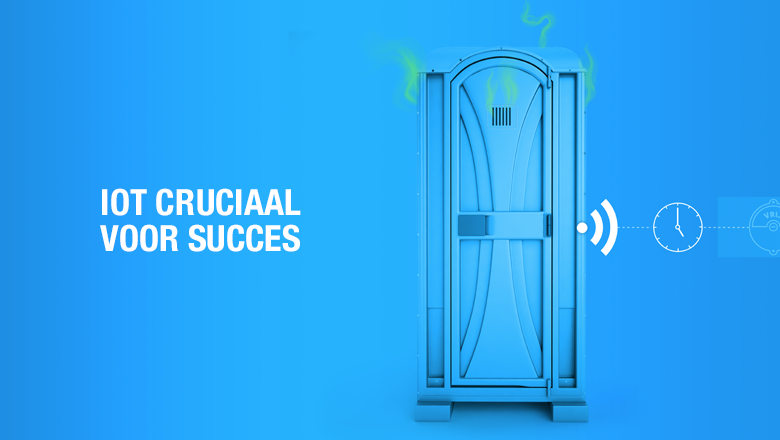
We use products from ClickSoftware to interpret the information and translate it into concrete orders for technicians which they receive on their smartphone or tablet. The system takes different priorities into account. You can imagine that a toilet that has fallen down, door first, with a person in it, will get the highest priority,” says Van Rooij.
Evocative simulations
The IoT partners developed various scenarios together. Van Rooij: “All kinds of problems can occur with mobile toilets. A broken lock, a full waste tank, it can be dirty or it can fall over. You also want to be able to predict toilet capacity. We simulate a mobile toilet business based on various tangible events, with scale models, dashboarding and scheduling software.”
“We make a distinction between three different actions that the IoT system controls: corrective maintenance, preventive maintenance and predictive actions for scheduling,” Van Rooij explains. “We have drafted scenarios for each application, which start with sensor data that can trigger a service order via the Azure platform.”
Predictive value with data analysis
Kresco and Ideo both play a role in analyzing and interpreting the big data stored in the Azure IoT system. The IoT team uses Azure and ClickSoftware to analyze the data from mobile toilets and external sources. As the quantity of data continues to grow, the predictive value of the system improves.
Astonish your sector with IoT
The partners in this IoT showcase share the same vision and ambitions. They all talk about the added value that is created by linking technologies and expertise. In fact, they believe that companies that embrace it will undercut the competition. IoT is no longer an option, but has become a must in order to survive in the future.
Van Rooij (Ideo) sees opportunities in the manufacturing and process industries where we won’t have to speak in terms of products and machines. “The difference between products and services might well disappear. It’s about the output of a product. Soon companies won’t have to buy compressors, but compressed air, or light instead of lamps. We’re currently developing a business case for IoT based on machine learning. That will generate millions for the customer.”
Joosten (Kresco) also sees concrete opportunities. “We’re working with a specialist in the production of shoe and prosthesis machines that’s going to start beating its only competitor thanks to a smart machine that can monitor the entire shoe production with real-time dashboarding. We’re also working on smart city applications.”
Key advice: start small
Although the technology already exists, IoT is still in its early stages. The IoT toilet created by Sentech, Kresco and Ideo is a tangible and practical showcase. The partners are unanimous on the most important advice that they can give to companies that want to enter the world of IoT: start small with a clear and feasible goal. That way, you create awareness within your organization. The larger business cases will follow automatically.
Want to know all the ins and outs of the IoT toilet?
Visit the special website and see what IoT really brings. Smart technology is the key to business continuity, connected to the cloud and applicable to your industry.
Are you ready for success?


